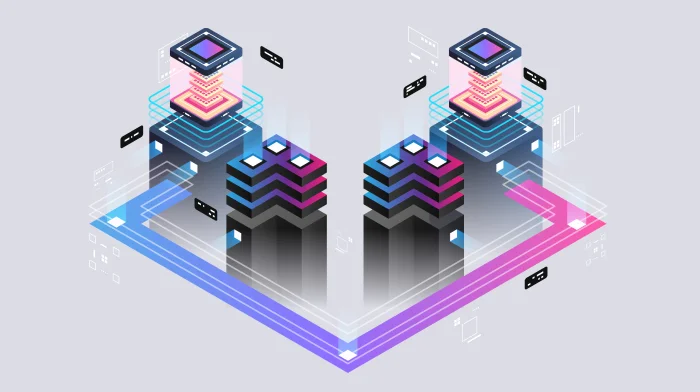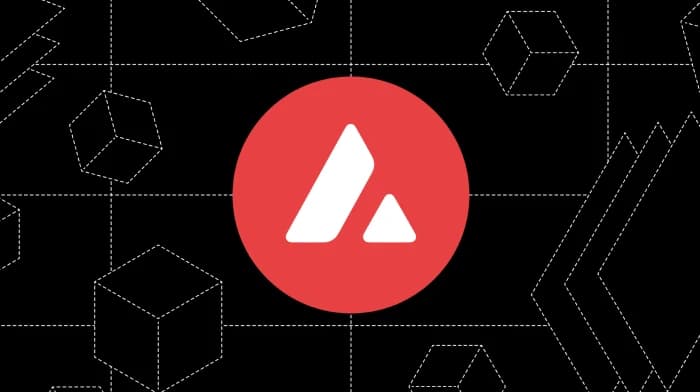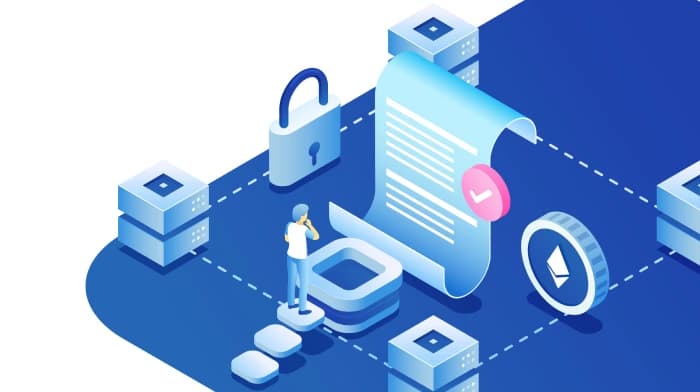
Introduction
The world of blockchain is moving fast with a need for more secure and decentralized systems. The value of cryptocurrency has shot up, surpassing $1.7 trillion. There are now over 3,000 decentralized apps running on various platforms.
As more people and businesses start using blockchain, it's becoming clear that knowing how the different parts work together is vital. This is especially true when looking at the layers that make up blockchain architecture, from the groundwork laid by layer 0 to the systems of layer 3.
The growth of blockchain has been swift and shows no signs of slowing. In such a changing environment, figuring out how each layer contributes to the blockchain ecosystem is key to unlocking its full potential.
Understanding Blockchain as a Layered System
The building blocks of a blockchain system start from the ground up, with each layer playing a part in creating a faster, more secure, and user-friendly experience. This applies all the way from the infrastructure to the applications that people actually interact with.
Delving into the world of blockchain, it becomes clear that this technology is made up of layers, each with its distinct function. A closer look reveals that it's not a single entity but rather a complex structure composed of various components.
Why Use a Layered Approach?
Breaking blockchain down into layers creates a system that's both organized and adaptable. This means that developers can make changes to parts of the network without having to tear the whole thing apart.
Benefits of layered architecture:
- Layers can speed things up with tools like rollups or sidechains
- Allows platforms to grow without sacrificing security
- Businesses can use blockchain technology through Blockchain as a Service solutions
- Makes it possible to build cross-chain systems
- Creates easier user interaction with blockchain technology
Layer 0: The Foundation Infrastructure
At the heart of it all is what's called Layer 0. This is the underlying infrastructure that all blockchain networks are built on. It's made up of systems like networking, hardware, protocols that ensure consensus, and mechanisms that let different parts of the network find and talk to each other.
What Layer 0 Does
This layer acts as the blockchain's operating system, basically providing:
- The groundwork for all other blockchain layers
- Management of consensus mechanisms and communication
- Security and scalability at the basic level
- Cross-chain communication capabilities
Key Layer 0 Technologies
When it comes to cross-chain communication, this layer uses advanced tech like:
- Inter Blockchain Communication protocol from Cosmos
- Polkadot's Relay Chain
- Other protocols that let different chains talk to each other
Notable Layer 0 Projects
Major Layer 0 Projects
| Project | Key Feature | Specialty |
|---|---|---|
| Polkadot | Parachains | Cross-chain communication |
| Cosmos | IBC Protocol | Inter-chain messaging |
| Avalanche | High throughput | Fast transactions |
Layer 1: The Core Protocol Layer
The concept of Layer 1 is crucial in the blockchain world. This is the layer that actually defines how the network operates - the backbone of any blockchain system where core protocols determine network function, consensus, and transaction verification.
Layer 1 Characteristics
At its core, Layer 1 has several key characteristics:
- Implements consensus methods (Proof of Work, Proof of Stake)
- Responsible for validating transactions and network security
- Hosts native tokens for each blockchain network
- Provides the foundation for smart contracts
Major Layer 1 Networks
Bitcoin: Pioneer in demonstrating Layer 1 capabilities, using Proof of Work for secure transaction processing.
Ethereum: Widely used platform for smart contracts and decentralized finance applications.
Solana: Known for extremely fast and relatively cheap transaction processing.
Layer 1 networks form the foundation of blockchain technology, but they can become congested when transaction volume increases, leading to higher fees and slower processing times.
Layer 2: Scaling Solutions
When main blockchain networks get clogged up and fees become too high, that's where Layer 2 solutions come in. These solutions handle transactions in a more cost-effective way and then send the results back to the main network.
Layer 2 Techniques
To improve transaction efficiency, several techniques are used:
- Rollups: Bundle transactions into batches for processing
- Sidechains: Operate independently while maintaining connection to Layer 1
- State channels: Allow for direct payments between users without going through the main chain
Key Layer 2 Projects
Polygon: Focuses specifically on providing Layer 2 scaling for the Ethereum network.
Arbitrum: Uses Rollups to boost speed and cut down on gas fees.
Optimism: Makes scaling possible using Optimistic Rollup technology.
Layer 2 solutions can handle up to 100 times more transactions than Layer 1, significantly improving performance while reducing costs.
Layer 3: The Application Interface
When it comes to the part of blockchain that users interact with, that's what we call Layer 3. This layer is about the applications, interfaces, and APIs that let users tap into blockchain networks.
Layer 3 Functions
Some of the key things this layer does:
- Supports decentralized apps (dApps)
- Provides user-friendly interfaces for wallets, exchanges, and gaming platforms
- Helps connect artificial intelligence with smart contracts
- Enables Web3 gaming and reward systems
Layer 3 Examples
MetaMask: Browser wallet extension for interacting with Ethereum and other blockchains.
Chainlink Oracles: Connects real-world data to smart contracts.
Web3 Games: On-chain gaming platforms that give players tokens as rewards.
As AI technologies continue to advance, there's growing integration between AI agents and Layer 3 blockchain platforms to increase automation and personalization.
How the Layers Work Together
The different layers of blockchain aren't separate entities - they're meant to work as a cohesive unit. Each layer has its role, but they all contribute to overall functionality, scalability, and user experience.
Vertical Integration
The layers are stacked on top of each other, with each building on the foundation laid by the layer beneath it:
- Layer 2 is built on top of Layer 1
- Layer 1 operates on Layer 0
- Layer 3 interfaces with all lower layers
Horizontal Integration
They also connect horizontally through cross-chain abstraction, which boosts how different blockchains can work together smoothly.
The Blockchain Trilemma and Scalability
Scalability is a crucial concept in blockchain - it's about how a network can handle more transactions, users, and applications without slowing down, getting too expensive, or compromising on security.
The Three Elements
One of the main hurdles in blockchain development is finding balance between:
- Decentralization: Network controlled by users, not central authority
- Security: Protecting network integrity and user assets
- Scalability: Ability to grow and accommodate more users
Achieving all three elements - scalability, decentralization, and security - at the same time is a complex problem to solve, known as the blockchain trilemma.
Layer-Based Solutions
The layered architecture helps address this trilemma by:
- Lower layers (0 and 1) focus on fairness and trustworthiness
- Higher layers (2 and 3) work on speed and user experience
- Each layer can optimize for specific aspects without compromising others
Real-World Applications
Looking at how layered architecture plays out in real life, there are examples that show the importance of good planning when using blockchain for high-performance applications:
Gaming
Using Layer 2 scaling solutions can create seamless gameplay and fast load times.
Logistics
Companies can use blockchain to track shipments and deliveries, making the process more transparent and efficient.
Finance
Secure trading platforms can function with low latency using decentralized ledgers that make tracking faster and more affordable.
Performance Metrics
To measure blockchain performance across layers, we look at:
- Transactions per second (TPS): How many transactions can be processed
- Transaction cost: The fee for each transaction
- Finalization time: How long it takes for a transaction to be confirmed
Layer Performance Comparison
| Layer | TPS Range | Cost | Finalization Time |
|---|---|---|---|
| Layer 1 | 7-4,000 | High | 10-60 seconds |
| Layer 2 | 2,000-65,000 | Low | 1-10 seconds |
| Layer 3 | Variable | Very Low | Near instant |
Choosing the Right Layer for Development
When building blockchain applications, the choice of layer depends on project requirements:
Layer 1 Development
Best for projects requiring:
- Maximum decentralization
- High security
- Native token functionality
- Core protocol development
Layer 2 Development
Ideal for applications needing:
- High transaction throughput
- Low costs
- Fast processing
- Scalability
Layer 3 Development
Perfect for creating:
- User-friendly interfaces
- Consumer applications
- Integration with traditional systems
- Enhanced user experience
Cross-Layer Projects
Many blockchain projects operate across multiple layers to achieve their goals. For example:
- A dApp might run on Arbitrum (Layer 2)
- Arbitrum relies on Ethereum (Layer 1)
- Everything connects through cross-chain protocols (Layer 0)
- Users interact through wallet interfaces (Layer 3)
Business Applications
Companies can leverage different layers strategically:
- Layer 0: Cross-chain operations and interoperability
- Layer 1: Secure storage of sensitive data and core operations
- Layer 2: High-volume transaction processing
- Layer 3: User-friendly applications and interfaces
This setup provides companies with scalable and reliable tools for blockchain implementation.
Ready to Build on Blockchain?
Partner with our blockchain consulting experts to design and implement the perfect multi-layer architecture for your business needs. From smart contract development to enterprise blockchain solutions, we help you leverage the right layers for optimal performance and scalability.
Future of Layered Blockchain Architecture
The modular approach to blockchain architecture is valuable because it allows for the flexibility and scalability necessary for large businesses to build applications across various industries.
By understanding how these different layers work, companies can make informed decisions about which technologies will work best for their specific goals - whether that's improving security, increasing speed, cutting costs, or enhancing user interaction.
The future of blockchain technology will rely on effectively using each layer of the blockchain architecture to create comprehensive, scalable solutions that can adapt to changing business needs and technological advances.
The layered approach ensures that blockchain technology can continue to evolve and scale while maintaining the core principles of decentralization and security that make it so valuable for modern applications.


